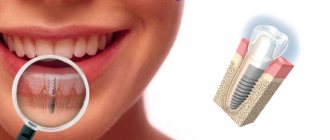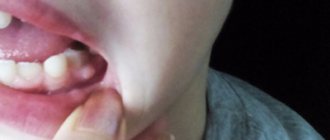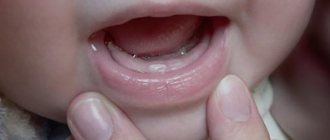Chickenpox - definition
Chickenpox (also known as varicella) is an infectious disease of Chickenpox (Varicella).
It is caused by the varicella zoster virus. By the way, a close relative of the herpes familiar to many. All herpes are contagious, but varicella is the coolest. Chickenpox spreads through airborne droplets, and does so very actively. To catch an infection, sometimes it’s enough to look into the patient’s room for a second.
It always seemed to people that the disease was literally carried through the air, by the wind. Hence the first part of the name - wind. It was named smallpox because of the numerous rashes in the form of fluid-filled vesicles (papules), similar to those that form in smallpox.
Fortunately, chickenpox is not as deadly.
Chickenpox symptoms
Chickenpox usually lasts about ten days. The main symptom of chickenpox is a typical rash. One to two days before the rash appears, the following nonspecific symptoms may occur:
- Fever
- Decreased appetite
- Headache
- Fatigue and general malaise
The chickenpox rash goes through three stages of development:
- Pink or red spots and bumps (papules), which appear in spurts, with each new wave of fever, 2-6 shocks per day, for 3-6 days.
- After a few hours, these papules turn into blisters filled with clear liquid (vesicles), they last for a day, after which they burst and the liquid flows out
- After the blisters burst, after a few hours weeping appears - in their place crusts form, which last from several days to several weeks until new tender skin forms under them, after which they fall off.
How to treat and anoint
Mouth ulcers cause more discomfort to a child than rashes on the body. The mouth hurts, irritated by food, drink, saliva. Exanthems need to be healed quickly. You can anoint your mouth with the following medications:
- "Chlorophyllipt". Heals wounds, relieves pain. Apply with a cotton swab to irritated areas.
- Solution of "Lysozyme" with novocaine. Rashes heal faster if you treat the wounds regularly. The medicine should be kept in the mouth for a couple of minutes, then spit out. The pain will go away in 1-2 minutes.
- Solcoseryl paste. Protector of mucous membranes from infections, activator of the body’s immune functions. Treatment is carried out 2-3 times a day until the ulcers disappear completely.
- "Kalgel". Safe even for newborns. Quickly relieves pain and aching gums. Can be used 3-4 times a day.
Chickenpox: course of the disease
Chickenpox is characterized by stages, which allows you to assess the course of the disease and navigate the quarantine period.
The incubation period of chickenpox is the time that elapses between the virus entering the body and the appearance of the first symptoms of the disease. It usually lasts 2 weeks, but can range from 10 to 21 days. The incubation period for chickenpox in adults and children is usually the same length.
The prodromal period is the initial stage of chickenpox. It is short (1-2 days), and may be absent altogether. Its characteristic symptoms are poor health, fever, muscle and headaches, and catarrhal phenomena in the nasopharynx. The first symptoms of chickenpox in adults are usually more pronounced than in children.
The rash period lasts 3-10 days. Elements of the rash appear in waves, this is accompanied by an increase in body temperature and poor health. 1-2 days pass between “waves” of rashes. There are usually 2-5 of these “waves”, then new elements stop appearing and gradually heal. The next stage begins - healing.
The recovery period begins from the moment when new elements cease to form, and all that appear become covered with crusts.
The period of convalescence (recovery) after chickenpox can last up to 1 year. The varicella-zoster virus causes a serious blow to the human immune system, and the process of its recovery is usually quite long. During this period, the body's resistance to other viral infections, such as ARVI, decreases.
How many days chickenpox lasts depends on the individual characteristics of the disease, the patient’s age, and the state of his immunity. On average, from the moment the first signs of chickenpox appear in a child until the elements of the rash completely heal, 3 weeks pass; in adults it may be longer.
CHICKENPOX IN CHILDREN: SYMPTOMS, COURSE, TREATMENT
Home — Social networks — CHICKENPOX IN CHILDREN: SYMPTOMS, COURSE, TREATMENT
CHICKENPOX IS A DISEASE THAT IS NOT LOSSING ITS POPULARITY. WHOLE KINDERGARTENS AND FAMILIES HAVE IT: CHILDREN, ADULTS, FUTURE MOMS. BUT DESPITE THE FELLOWSHIP, THE SYMPTOMS AND TREATMENT OF CHICKENPOX IN CHILDREN AND ADULTS CONTINUE TO CAUSE MANY QUESTIONS. TODAY OUR EXPERTS WILL ANSWER THE MOST COMMON OF THEM.
WHAT IS CHICKENPOX
Varicella zoster virus is a type of herpes. More precisely: the herpetic virus varicella zoster (Varicella zoster), the 3rd type of herpes viral infection. The signature sign of chickenpox is a blistering rash that often covers the entire body (although there are also cases of localized rashes). In the past, each such pimple was supposed to be smeared with brilliant green, so in our country chickenpox is firmly associated with children with green spots. Dr. Komarovsky even has a joke about this: “A spotted green rash is a characteristic symptom of chickenpox.” When the blisters burst, they cause itching, which can lead to scratching and secondary infection of the wounds. The “favorite” season of the disease is considered to be autumn-winter, and epidemic outbreaks are recorded once every 5 years.
Chickenpox predominantly affects children aged 1 to 10-12 years, and the majority of cases are among children 3-4 years old.
HOW INFECTION WITH CHICKENPOX OCCURS
Susceptibility to the chickenpox virus is very high because it is very volatile - it covers distances of up to 20 m, from floor to floor, through ventilation. Chickenpox is transmitted through the mucous membranes of the eyes and upper respiratory tract. But the virus has several ways of entering someone else’s body from a patient. The virus literally travels with the wind: through airborne droplets - when talking, coughing, crying loudly, or screaming. It spreads through contact and household contact - infection with saliva or fluid from a pimple. Transmitted by direct touch. A pregnant woman with chickenpox can infect her child, since the virus passes transplacentally, that is, through the placental barrier from mother to fetus.
To become infected with chickenpox, it is enough to communicate with someone who has chickenpox or someone who has shingles (herpes zoster), and chickenpox infection will occur even with fleeting contact with him. The period of contagiousness of chickenpox in patients begins at the end of the incubation period (48 hours before the appearance of the rash) and continues until the 5th day from the moment the last pimple appears. Moreover, the incubation period of chickenpox in children and adults is not typical at all and does not manifest itself in any way for 1-3 weeks (at least 7 days), so it is impossible to say exactly when those same 48 hours before the appearance of acne will occur.
INCUBATION PERIOD OF CHICKENPOX
The incubation period, that is, the time from the moment of introduction to the first signs of chickenpox, is 11-23 days. During this period, the pathogen penetrates through the mucous membrane of the upper respiratory tract, then multiplies and accumulates in the epithelial cells of these mucous membranes.
After the maximum accumulation of the chickenpox pathogen, it spreads through the lymphatic and blood vessels.
In some patients (there are very few of them), the end of the incubation period is marked by scarlet-like rashes. This may be the first sign of chickenpox in children and adults. This condition lasts literally one day, several hours, then the rash disappears, the temperature rises to 37-38⁰C.
WHEN DOES THE RASCH APPEAR DURING CHICKENPOX?
After the incubation period, the period of rash begins. These are the most obvious and first signs of chickenpox in children and adults. The period of rash lasts for 3-5 days, while the lymph nodes enlarge, the temperature rises to 37-39°C, persisting throughout the entire period of the rash. Also, each new outbreak of rashes is usually accompanied by a rise in temperature.
WHAT DOES THE RASHE (ACNE) LOOK LIKE WITH CHICKENPOX
A rash with chickenpox appears on the 1st day of the onset of intoxication, with breakouts (the appearance of new pimples) within 5 days - some pimples are already going away, while others are just appearing. Therefore, it seems that the patient has pimples of different types: blisters, spots, and crusts at the same time.
The rash does not have a favorite localization; rashes can even be on the scalp, on the mucous membrane of the mouth, genital organs in girls and women, conjunctiva/cornea, and larynx. All these pimples mature and heal within 5 days, and the rash is accompanied by itching of varying intensity. Against itching, various doctors recommend using antihistamines, wet wraps or even baths. During the first day, the red spot turns into a blister and after a couple of days the rash looks on the surface of the body like “dew drops” with transparent contents, which becomes cloudy after 1-2 days, and after another 1-2 days the blister dries out and turns into a crust that falls off after 1-3 weeks.
WHY ARE PIMLES LUBRICATED WITH ZELENKA
As Dr. Komarovsky wittily noted, speaking about chickenpox: “Painting a child with brilliant green is a personal matter for his parents, determined by their love of painting and has nothing to do with treatment.” In fact, brilliant green does not treat chickenpox rash, but is a medical marker with which the appearance of new pimples on the patient’s body is noted. As soon as new objects for staining with brilliant green stop appearing on the skin of a child with chickenpox, and old pimples have crusted over, that’s it, the child is no longer contagious. Nowadays, pimples are smeared with brilliant green only by those who firmly believe that it is one of the mandatory means of treating chickenpox. But this is a misconception. You can't cure pimples, you can only wait until they go away on their own. To avoid secondary infection of the skin, it is necessary to prevent scratching in the area of acne. To do this, you need to purchase other drugs from pharmacies that are specially created to eliminate symptoms of such diseases. They relieve itching, dry, have a cooling effect and, by the way, are also not completely colorless.
WHEN DOES A PATIENT WITH CHICKENPOX STOP BEING INFECTIOUS?
A patient with chickenpox ceases to be contagious as soon as the appearance of new pimples has stopped, and crusts have already formed on all existing ones. The recovery period lasts for 3 weeks from the end of the rash and is characterized not only by the falling off of the crusts, but also by the formation of lifelong immunity. After the crusts fall off, dark spots remain, which disappear within a few weeks. There are no scars left unless there is a secondary infection.
CHICKENPOX IN INFANTS
Breastfed newborns up to 6 months usually do not get sick due to antibodies received from the mother, but only if the mother herself has previously had chickenpox or has been vaccinated. If the mother has not passed on these antibodies to the baby (not having them herself), then the baby may get chickenpox. Please note that we are talking specifically about breastfed babies. Formula-fed babies do not have such antibody protection.
In a sick infant, the disease is severe. Against the background of high temperature, intracranial pressure may increase, which will be indicated by visible pulsation of the fontanel and convulsions. The rashes in such babies are profuse and the maturation of the rash proceeds more slowly, becoming protracted - up to 9 days, instead of 5. Bacterial complications often occur.
For this reason, all newborns whose mothers have not had chickenpox or were infected a few days before birth, as well as all premature babies under 1 kg, regardless of the mother’s infectious history, must be administered a special immunoglobulin. This is not a vaccination against chickenpox, but temporary protection against it until the child is strong enough to cope with this virus on his own, unless, of course, the mother chooses vaccination over the disease.
It is worth noting that children who are not in a group, children under 3 years of age, as a rule, very rarely have the opportunity to become infected with chickenpox. Adults also rarely get this disease.
IS IT DIFFICULT TO IDENTIFY CHICKENPOX?
In typical cases (and this is the majority of cases of chickenpox), the diagnosis of the disease is established on the basis of characteristic clinical data of the disease. The clinical picture of chickenpox is so typical that there is simply no need for additional diagnostics.
However, in some cases, when the disease does not proceed in a completely typical manner, it may be necessary to carry out a differential diagnosis of chickenpox with other viral infectious diseases, mainly those that are accompanied by similar symptoms. We are talking, first of all, about influenza, parainfluenza, measles; in some cases, differential diagnosis with rubella may be required. For this, a blood test is done.
IS IT POSSIBLE TO CONFUSE CHICKEN POX AND RUBELLA?
The doctor, of course, will not confuse these diseases. For doubting patients, you need to keep in mind their obvious differences. With chickenpox, a polymorphic rash is most often observed, that is, spots, crusts, and blisters are simultaneously present on the skin. With rubella, only a pinkish rash can be observed. With chickenpox, the temperature can rise to 40°C; with rubella, it occasionally reaches 39°C. The rubella virus is dangerous for the fetus; the chickenpox virus does not pose such an acute danger to pregnant women. Chickenpox can be complicated by inflammatory phenomena on the skin, but this does not happen with rubella. Chickenpox rarely goes away with catarrhal symptoms; with rubella, redness of the pharynx and catarrh of the upper respiratory tract almost always occur.
HOW TO TREAT CHICKENPOX IN CHILDREN?
If a child of the first year gets sick with chickenpox, treatment is carried out only under the supervision of a doctor with possible hospitalization
, because the course of infectious processes in young children is prone to generalization, frequent and severe complications and high mortality!
In children aged 2 to 10-12 years after diagnosis (with primary chickenpox), specific treatment for uncomplicated chickenpox is not carried out (and patients are not painted with brilliant green). All manipulations with a patient with chickenpox are associated with the relief of symptoms, namely: reducing the temperature with antipyretics (except aspirin) and relieving skin itching, if any. If the child does not look lethargic, if his temperature is not too high, then you should not convince him that he is very sick and needs bed rest. Children under 10-12 years of age suffer from chickenpox quite easily. And the only thing that usually torments them is the itching of the chickenpox rash. This problem is solved by using antihistamines.
To prevent the child from scratching the skin in areas of chickenpox rash, parents will have to monitor him and distract him. It is also necessary to monitor the child’s nails, and very young children can wear special mittens - “scratchies”. There is also a “grandmother’s” way to help a child with severe itching, even if antihistamines do not help - this is a feather. In the past, children were relieved of itching with a goose feather - with its help, mothers “scratched” especially disturbing places on the skin, without creating scratches.
A month after recovery from chickenpox, the doctor examines the patient, with an appointment for an immunological examination and specialist examination. Preventive vaccinations cannot be given within 1 month.
IS QUARANTINE FOR CHICKENPOX REQUIRED?
In the not-too-distant past, quarantine due to chickenpox was as commonplace as wearing war paint with brilliant green on children affected by this virus. But now, when there is a mass incidence of chickenpox, kindergartens and schools are usually not closed for quarantine. Groups and classes in which children with chickenpox have been identified continue to function, but they may be subject to temporary (up to three weeks) bans on outings, on contacts with children from other groups (classes), as well as on the admission of new children to them .
Types of chickenpox (classification of chickenpox).
Chicken pox occurs in typical and atypical forms and in terms of severity is mild, moderate and severe. Chickenpox is also classified according to ICD-10 (with meningitis, encephalitis, pneumonia).
Atypical forms of chickenpox are divided into:
- Hemorrhagic form - a common consequence of this form is bleeding, and this form occurs in people with thrombocytopenia.
- Pustular form - develops when a bacterial agent is attached.
- Gangrenous form - can lead to the development of sepsis and occurs most often in patients with weakened immunity.
- The generalized (visceral) form of chickenpox is characterized by development in patients with immunodeficiency. It is very difficult, the symptoms are more pronounced and often ends in death for the sick person.
- The rudimentary form is found in children who received immunoglobulin during the incubation period. It flows quite easily.
The severity of chickenpox is directly determined by the degree of intoxication syndrome and its criteria, as well as the presence of specific vesicular rashes on the skin and mucous membranes. It should be noted that there are also so-called abortive (very mild) cases of the disease, which occur without the appearance of fever and are characterized by the appearance of single rashes on the skin of the abdomen and back. Such chickenpox is detected in kindergarten during examinations during outbreaks.
To the question “how long does chickenpox last?” It is difficult to answer unequivocally, since the duration of the disease directly depends on the form and course of chickenpox. On average, in the classical (typical) course, the duration of the disease is from 12 to 16 days.
Types and forms of the disease
In children, chickenpox occurs in a typical and atypical form; based on the symptoms, there are mild or latent, moderate and severe forms of the pathology.
Forms of the disease:
- mild – temperature values are normal or no more than 38 degrees, the period of rashes lasts no more than 4 days, the rashes are few in number, the general condition is satisfactory;
- moderate - intoxication is characterized by headache, aching in the lower back, muscles, fatigue, temperature readings above 38 °, numerous rashes appear over 5 days;
- severe - frequent vomiting, lack of appetite, temperature rises to 40 degrees, the period of rash lasts 9 days, the rash covers the entire body and mucous membranes.
Chickenpox is congenital - the child becomes infected in utero from the mother. If infection occurs in the early stages, children are born with various anomalies or deformities; if a woman is diagnosed with chickenpox in the later stages, the baby will be born with antibodies to chickenpox, without signs of pathology.
Chickenpox of newborns - develops if a woman becomes infected with the Zoster virus 5 days before giving birth, or within a few days after the birth of the child. The baby is born with typical signs of chickenpox; the pathology is easily treated with antiherpes drugs. But if therapy is not started in a timely manner, the mortality rate is more than 30%.
Turkish chickenpox got its name because its symptoms are similar to ordinary chickenpox, but the disease is caused by the Coxsackie enterovirus. The pathology manifests itself in the form of high fever, abscesses and ulcers in the mouth, on the buttocks, limbs, genitals, vomiting and intestinal upset. The incubation period is 3–10 days, immunity is not developed after recovery.
Sometimes children are diagnosed with false chickenpox - this is when an allergy occurs like chickenpox.
Types of atypical chickenpox
Gangrenous - the virus affects the deep layers of the skin, the cells gradually die, and necrosis develops a few days after the first rash appears. A characteristic sign is a dark purple rim around the papules; ichor accumulates in the blisters.
When the blisters open, they are covered with a scab; under the crust there is an ulcer that does not heal well. Gangrenous chickenpox occurs against a background of high temperature, severe intoxication, and the virus affects the nervous system. This type occurs in weakened children with various types of immunodeficiency, and often ends in death.
Bullous chickenpox - instead of a small rash, large blisters with a flabby surface and pale yellow liquid inside appear on the skin. After opening the bullae, long-term non-healing ulcers and deep wounds with a fibrin bottom appear.
Generalized chickenpox - the virus affects all internal organs; without timely and correct treatment, there is a high probability of death of the child. The pathology is rare, most often it is diagnosed in children with severe defects in the immune system, during long-term treatment with steroid or antitumor drugs.
The hemorrhagic form of chickenpox - blood accumulates in the blisters, blood clotting worsens, which causes nasal and internal bleeding, and the gums bleed heavily. Dark red crusts form in place of the papules; after recovery, deep scars and scars remain on the skin. The disease develops in patients with disorders of the hematopoietic system.
The rudimentary form is the safest type of chickenpox; it often occurs in an erased form, without a rash or with minor rashes in the form of spots, the temperature remains within normal limits. Diagnosed in infants in the first months of life, or in vaccinated children.
Important! After recovery, children develop stable, but not lifelong, immunity, so secondary chickenpox is often diagnosed in adolescence or adulthood.
Diagnosis of chickenpox
The basis for detecting herpes is a virological study - examination of media to detect the pathogen. In case of chickenpox, for diagnosis, liquid from vesicles is used, in which, when stained, accumulations of the pathogen, the Argan corpuscle, are isolated.
Chickenpox is usually distinguished from insect bites. The main difference is the lack of development of elements and bedding, as well as normal body temperature.
Also, the disease should be differentiated from:
- streptoderma - occurs without fever, the rash is different - cloudy, purulent contents, after involution leaving a yellow crust, in its place a red spot forms. The rash is located mainly behind the ears and on the extremities, never on the scalp (a hallmark of chickenpox).
- herpes zoster - the blisters are located strictly along the nerve trunk; they practically never occur on the legs and arms.
- vesicular rickettsiosis - a small scab forms at the site of the tick bite, followed by the formation of an ulcer (a scar forms in its place after healing). Enlargement of regional lymph nodes is typical.
Diagnostics
The diagnosis of herpes gingivitis is quite easy for a child to make, since the disease has characteristic clinical manifestations. The diagnosis is made by the dentist based on an examination of the baby’s oral cavity and data on the course of the disease. Characteristic formations on the mucous membrane and manifestations of inflammation in the mouth clearly indicate that this is a specific lesion. To clarify the nature of the lesion, the doctor prescribes general blood and urine tests. If the disease is severe, it is necessary to clearly identify the type of pathogen. In this case, specific laboratory research methods are used.
These include:
- virological study;
- polymerase chain reaction;
- immunofluorescence method;
- HSV test for the determination of immunospot G-specific glycoprotein;
- serological test with immunoglobulin M.
These methods determine with a high degree of accuracy the type of pathogen in the blood and discharge from ulcers. But they are very expensive and labor-intensive, so they are used quite rarely.
When to see a doctor?
If you suspect that you or your child has chickenpox, consult your doctor. The doctor will be able to make a diagnosis simply by examining you, studying the elements of the rash and accompanying symptoms. Your doctor may also prescribe medications to reduce the severity of chickenpox and reduce the risk of complications, if necessary. Call the pediatrician in advance and warn that you suspect chickenpox - the doctor will see you in a separate room, without waiting in line, to avoid the risk of infecting other patients.
Also, be sure to tell your doctor if you have any of these complications:
- The rash has spread to one or both eyes.
- The skin around some parts of the rash becomes very red, hot, or painful, indicating a secondary bacterial skin infection.
- The rash is accompanied by dizziness, disorientation, rapid heartbeat, shortness of breath, tremors (shaking hands), loss of muscle coordination, increasing cough, vomiting, difficulty bending the head forward, or a fever above 39.4 C.
- a history of any immunodeficiency, or age younger than 6 months.
How to treat chickenpox
Chickenpox is a virus. And, like most viruses, there is no specific treatment for it. Helping a sick person comes down to alleviating the main symptoms.
Fever and headache
Remember: paracetamol and nothing else! Popular painkillers and antipyretics based on ibuprofen should not be taken. The use of nonsteroidal anti-inflammatory drugs and the risk of serious skin and soft tissue complications in patients with chickenpox or herpes zoster have been reported to indicate that ibuprofen for chickenpox increases the incidence of complications such as skin infections.
Aspirin is completely contraindicated. In conjunction with the varicella-zoster virus, it has a powerful toxic effect on the liver and brain (the so-called Reye's syndrome).
Itching
To relieve itching, your doctor may recommend an antihistamine. Considering the insidiousness of the virus, under no circumstances prescribe it to yourself!
You can also treat your skin with calamine lotion according to the instructions.
Scratches and wounds
To avoid scratching the skin and causing infection in the wounds:
- Trim your nails as short as possible. If your baby is sick, put on thin protective gloves.
- Wear clean, loose clothing.
- Change your underwear and bed linen more often.
It is not necessary to smear the rashes with brilliant green: brilliant green will not speed up the maturation of the blisters. The color only helps to mark pimples in order to track the moment when new ones stop appearing.
Soreness in the mouth
If there are rashes on the oral mucosa, doctors recommend eating sugar-free popsicles. The cold will help relieve discomfort. Also try not to eat salty and spicy foods.
What does chickenpox look like on the oral mucosa: photo
Rashes in the mouth look like small blisters. They burst and turn into small wounds that do not heal or crust over, unlike a rash on the body.
Chickenpox may first appear on the face and lips, and then in the mouth.
- Causes of rashes in children
Acne can cause discomfort and appear in various places:
- on the soft and hard palate;
- on the gums;
- on the inner surfaces of the lips;
- on the tongue, under the tongue;
- on the inner sides of the cheeks;
- in the throat.
With a rash in the mouth, a child may cry, refuse to eat, and sleep restlessly at night. It is important for parents to recognize vesicles in the oral cavity at the very beginning and seek advice from a pediatrician.
Pockmarks on the palate of a child Rashes on the tongue Blisters on the tongue of a child
The appearance of chickenpox on the mucous membranes indicates a more severe course of chickenpox, so only a doctor can select therapy and alleviate the symptoms of the disease in a child.
What complications can occur with chickenpox?
The disease is usually mild, but complications may occur, including bacterial infections (eg, bacterial skin lesions, pneumonia) and neurological infections (eg, encephalitis, meningitis, myelitis), which can be fatal.
Secondary bacterial skin infections, which are caused by streptococcus or staphylococcus, are the most common cause of hospitalization and outpatient medical visits. Secondary infection with invasive group A streptococci can cause abscesses and cellulitis.
Pneumonia after chickenpox is usually viral, but can also be bacterial. Secondary bacterial pneumonia is more common in children under 1 year of age. It is characterized by an increase in temperature up to 40⁰C, an increase in pallor and cyanosis of the skin, the appearance of a substernal dry cough and shortness of breath. Patients can take a forced position in bed.
Damage to the central nervous system in chickenpox ranges from aseptic meningitis to encephalitis. Cerebellar involvement followed by cerebellar ataxia is the most common presentation of central nervous system disorders but usually has a positive outcome.
Encephalitis is one of the most dangerous complications of chickenpox (10-20% of cases are fatal). This complication manifests itself as headache, nausea, vomiting, convulsions and often leads to coma. Diffuse brain involvement is more common in adults than in children. Chickenpox meningitis may occur together with encephalitis or independently.
Rare complications of chickenpox include Guillain-Barré syndrome, thrombocytopenia, hemorrhagic and bullous chickenpox, glomerulonephritis, myocarditis, arthritis, orchitis, uveitis, iritis and hepatitis.
Once infected, the virus remains hidden in nerve cells and can be reactivated, causing a secondary infection, herpes zoster. It usually occurs in adults over the age of 50 or with a weakened immune system and is associated with a painful rash that can cause permanent nerve damage.
Symptoms
Signs of herpes gingivitis in a child do not appear immediately after infection. Its latent period lasts up to eight days. The disease begins abruptly. At first, the baby becomes capricious, lethargic and restless. He sleeps poorly, refuses to eat, and complains of pain in his mouth.
After some time, the following manifestations of the disease appear:
- high temperature up to 39 degrees;
- increased salivation;
- gums become swollen and red;
- intergingival papillae increase;
- the oral mucosa is swollen;
- the tongue swells and becomes covered with a white coating;
- blistering rashes on the mucous membranes and skin around the mouth;
- nearby lymph nodes enlarge;
- headache;
- bad breath;
- general malaise;
- burning.
In place of the blisters, when they burst, ulcers appear that do not heal for a long time. All other manifestations disappear within a week, but they persist for up to fourteen days.
Chickenpox and pregnancy
A special type of complications from chickenpox can occur in pregnant women. Chickenpox in early pregnancy can lead to a variety of problems in the newborn, including low birth weight and birth defects such as limb abnormalities. A particularly great threat to the child occurs when the mother gets chickenpox a week before giving birth. In this situation, there is a high risk of infection that is life-threatening to the newborn (congenital chickenpox syndrome).
If you are pregnant and have been in contact with someone who has chickenpox, be sure to talk to your doctor about the risks to you and your unborn baby.
Is it possible to wash yourself if you have chickenpox?
“Is it possible to swim if you have chickenpox?” is an age-old question parents ask their pediatrician. The answer depends on the patient’s well-being. In general, bathing with chickenpox is not only safe, but even beneficial - keeping the skin clean reduces the risk of secondary infection and promotes faster healing. However, at high body temperatures, it is better to refrain from water treatments and limit yourself to treating the rash elements with antiseptics.
If you have chickenpox, you can bathe in a weak solution of potassium permanganate or with herbal decoctions, but it is better to refrain from using cosmetics (shower gels and even soap). It is also undesirable to use washcloths and towels, as they can injure the skin.
Treatment
Treatment of mild forms of herpetic gingivitis in children is carried out on an outpatient basis under the supervision of a physician. In severe cases of the disease, the patient is hospitalized in a hospital. The patient is prescribed a diet with a predominance of pureed food that does not irritate the oral mucosa. It shouldn't be hot. There is no need to give your child solid food to prevent additional injury to the gums.
For mild forms, local treatment is used.
The following drugs are used:
- antiviral agents (Acicovir, Ganciclovir) - destroy the DNA of the virus, use ointment to lubricate the gums up to five times a day for two weeks;
- local anesthetic gels and ointments (Lidochlor gel, Kamistad) - they anesthetize, disinfect, have an anti-inflammatory effect, are used three times a day, two weeks;
- local antiseptics (Iodinol, Miramistin, Hexoral) - these agents rinse the mouth every four hours, two weeks;
- reparative preparations (Solcoseryl-gel, Methyluracil ointment) - applying ointments to ulcers promotes their epithelization and rapid healing, applied three times a day for two weeks.
Herbal infusions (chamomile, rose hips, calendula, sage, St. John's wort, licorice) are widely used for rinsing when gums are damaged.
In severe cases, the baby is prescribed oral medications.
The following drugs are prescribed:
- antiviral drugs (Famciclovir, Acyclovir, Zovirax) - taken according to the regimen prescribed by the doctor, the drug must be taken to the end, otherwise there will be a relapse;
- antihistamines (Suprastin, Tavegil, Citrine) - reduce swelling of gum tissue and reduce pain;
- antipyretics (Panadol, Nurofen) are used to reduce high fever.
Parents should monitor the baby’s oral hygiene; during illness, it is carried out especially carefully. To prevent gum injury, it is recommended to use toothbrushes with soft bristles. It is necessary to treat toys and objects that the baby uses with antiseptics.










